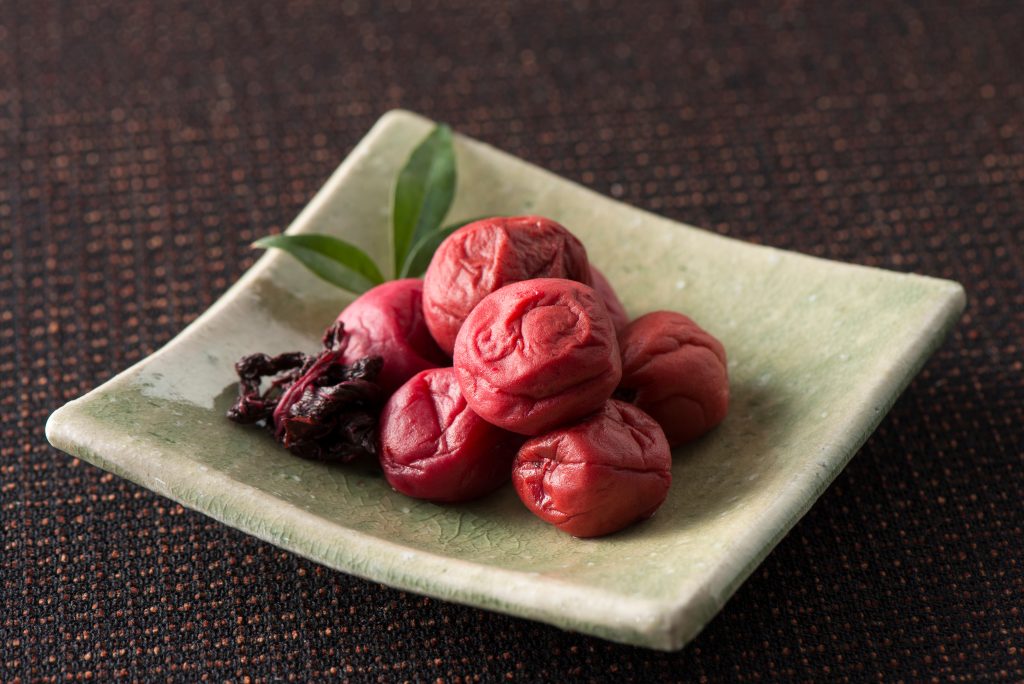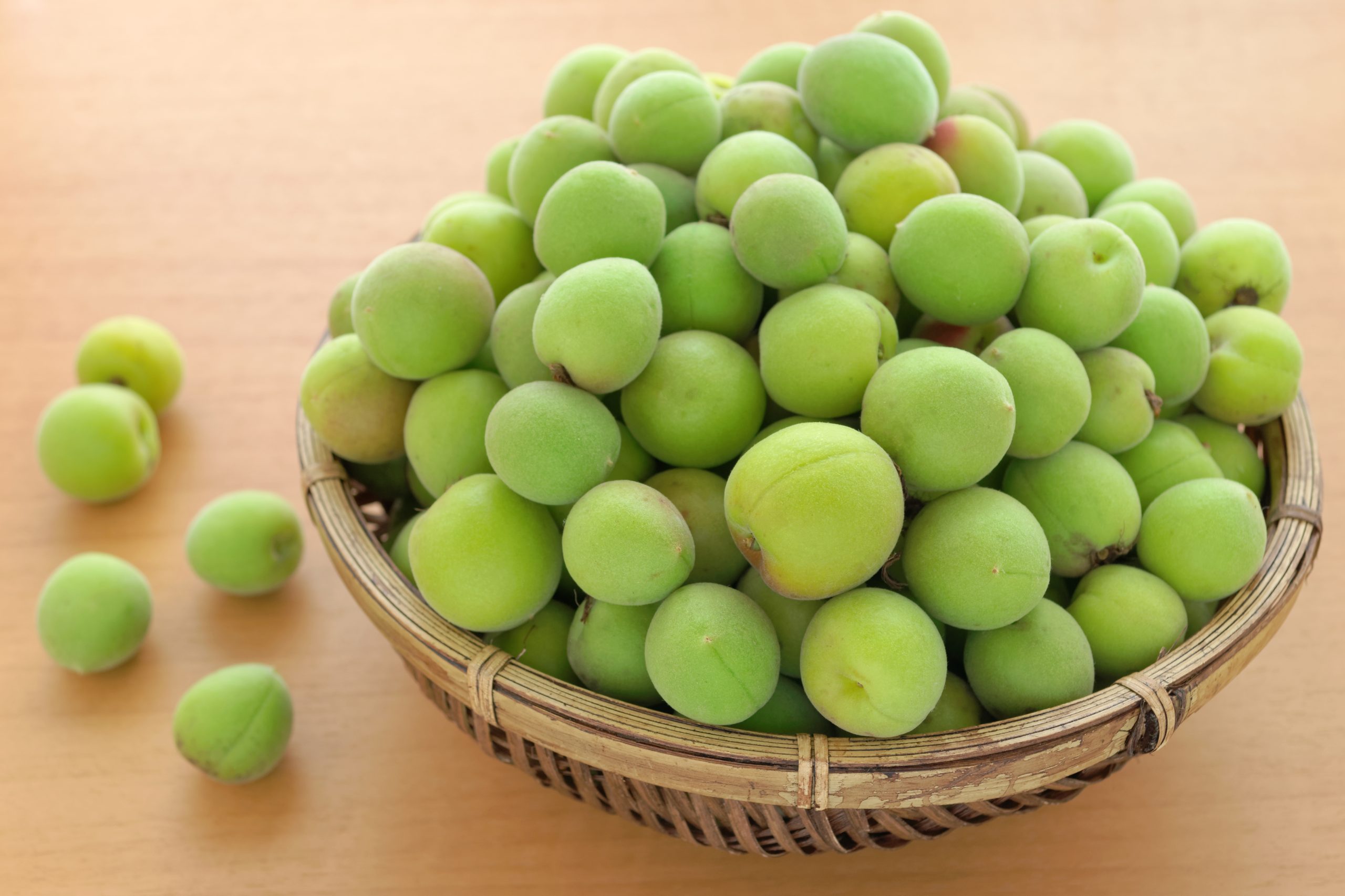Japanese plums are small, round drupes with yellow-pink flesh. They have great flavor and aroma, making them a delicious addition to any dish or refreshment.
Table of Contents
What is a Japanese Plum?
The Japanese plum (Prunus salicina) is a small variety of drupe with a yellow-pink interior and a 4–7 centimeter (1.5-2.75 in) diameter. The skin has a powdery coating and can be yellow, red, or occasionally green or purple. The fruit is spherical, egg-shaped, or conical in shape and ranges in diameter from 3.5 to 5 cm (1.3-2 in), though it can grow as large as 7 cm (2.75 in) depending on the cultivars.
Japanese plums are firm and smooth-skinned like other plums but also share a similar appearance to amla, a popular berry from Southern Asia. When completely ripe, they have a stunning dusky yellow hue, one reason gardeners adore having a plum tree as an ornamental piece.
Even though its name states that it is Japanese, this plum is actually the fruit of a small deciduous tree originally native to China. Other common names include willow leaf cherry, loquot, ume, Japanese medlar, pipa, nespolo, and Chinese plum.
Because it is an inherently sweet fruit, the Japanese plum is very well-liked. When it is ripe, many people consume it “as is,” sometimes straight from the tree. Japanese plums are used as a natural sweetener in many recipes to reduce the amount of sugar added because of their sweetness.
The History of Japanese Plums
Despite being a native of central China, the Japanese plum has been cultivated in Japan for more than a millennium. It thrives in areas with mild temperate to subtropical climates, and they typically thrive at higher altitudes in the wild. It’s unique that these trees are evergreen and still keep their leaves even in hotter climates.
Plum seeds traveled extensively with Chinese missionaries, which allowed the fruit to be naturalized in numerous nations. This happened primarily during the 16th century when the fruit was in high demand, which also happened to be when there was contact with the Portuguese.
These days, it can be found in its home country of China, Japan, India, South Africa, the Mediterranean region, Mexico, South America, and some parts of the United States.
The poetry of well-known Chinese poet Li Bai contains one of the most noteworthy references to the fruit. The Japanese plum goes by many different names based on where it is grown, and there are currently over 800 different types.

What Does a Japanese Plum Taste Like?
The taste of Japanese plum has been compared to a mixture of peach and apricot. This and its high pectin level make it a beloved addition to jellies and chutneys. The pits of the Japanese plum are mildly poisonous and should not be eaten, like many other related fruit trees and shrubs.
Umeboshi is a very salty, sour side dish in which the plums are pickled in highly salted barrels, so if it’s your first time eating Japanese plums, beware!
How to Tell When Japanese Plums Are Ripe
Fruits should be left on the branch to ripen. They will be available to pick once they have reached their full color. Here’s how to know when Japanese plums are ready to be eaten:
| Color | Depending on the variety, the plums need to have darkened to their final color. They should be a dusky yellow color. Avoid any plums that have bruises or cuts on them. |
| Texture | When pressed firmly, the fruit should feel slightly soft but not mushy. Avoid any fruit that feels squishy. |
| Harvesting | Ripe fruit ought to be soft and easy to remove from the branch. |
What’s the Difference Between Japanese Plums and European Plums?


European and Japanese plums are considerably distinct from one another. Let’s take a look at how their various attributes compare:
| Growing Process | Japanese cultivars bloom sooner and will need a pollinator to fruit. European plums typically self-fruit but have delayed blooming and ripening tendencies. |
| Color | The flesh may be red, yellow, or green, while the spectrum of skin tones includes yellow, red, purple, green, blue, and almost black. Japanese types can have large, juicy red fruits or small bright-green colored ume. European varieties follow similar suit but can most commonly be found in large, purple and red varieties. |
| Cooking | The European subset of plums includes prunes, which have a high sugar level to permit sun drying without resulting in fermentation. While Japanese plums are almost always consumed fresh, European plums, which have firmer meat, are frequently canned or turned into jams or jellies. |
| Ancestry | A wild plum tree called Prunus domestica that grows close to the Caspian Sea is believed to be the source of some European varieties. P. saliciana, found in China and Japan, may also be a wild ancestor of the European and South African types. Additionally, Americans have crossed American wild plum P. subcordinata with Asian or European plum varieties. |
Can I Eat Raw Plums?
Yes, people enjoy eating fresh and dried raw plums. Although ume plums are very astringent, they are entirely safe to eat and quite delicious when salted or alcohol-preserved.
Fresh, tart plum juice is extracted and turned into a cool summer beverage in China, Japan, and Korea. Japanese plums are considered healthy for you, so many people enjoy eating them fresh off the vine.
Cooking with Japanese Plums?
In order to consume the fruit, one must first prep it by following this simple, 3-step method:
- The seed has to be removed. Cut down the middle of the plum and open it.
- Carefully remove the pit with a spoon or a knife very carefully.
- Slice the flesh of the fruit according to the recipe you intend to follow.
The applications for Japanese plums are countless. They can be put in the freezer and used later. They make excellent preserves, jellies, and chutneys because of their high sugar, acid, and pectin content. When correctly canned, they will last a while.

Here are some of our favorite Japanese plum recipes:
Umeboshi (Pickled Japanese Plums): Here is a traditional Japanese recipe using Japanese plums to make a type of pickle. Because of their high salt content, they’re supposed to be eaten in moderation.
Umeshu Plum Wine: This one is for adults only! This plum wine has an effect that makes people eat more, so it is frequently offered as an aperitif and standard beverage in Japanese restaurants. It is made from unripe green ume plum fruits, rock sugar, and liquor.
Japanese “Ume” Plum Syrup: All you need are two ingredients to make this Plum Syrup, which is perfect for adding to dishes like pancakes or ice creams. You need rock sugar and, of course, Japanese plums.
How to Store Plums
With appropriate storage, Japanese plums will retain their excellent eating qualities for a long time. Pick them a little earlier, right as they are beginning to ripen, if you intend to preserve them. Handle them gently to prevent bruising that might cause deterioration.
A humid, cool environment between 32 and 40°F is optimal for storage. Put them in perforated freezer bags and store them somewhere cold. The ideal storage location is a refrigerator, but any cool room in your home, the cellar, or an unheated porch may also work for a while.
When you’re ready to use them, let them ripen at room temperature.
When storing plums, looking for spoiled fruit once every week or so is best. You can then get rid of any that are forming brown or soft patches. By doing this, adjacent fruit isn’t exposed to spoiled fruit. Keep in mind that “one bad apple spoils the whole bunch.”
Nutritional Benefits of Japanese Plums
The vitamin C in Japanese plums benefits your body’s ability to recover, develop muscle, form blood vessels, and protect your eyes. Other advantages of plums for health include:
| Reducing Blood Pressure | In a research, participants who consumed prunes and juice had lower blood pressure than the control group who did not consume any prunes. |
| Defense Against Cell Injury/Cancer | The reddish-blue substance found in plums called anthocyanins has anti-free radical properties. As a result, your body can better fend off cancer and cell harm. |
| Helpful in Relieving Constipation | Because prunes are made from dried plums rich in nutritional fiber, they are well known for their ability to relieve constipation. A recent study found that eating plums helped relieve the constipation symptoms of 51 adults suffering from the condition. |
| Enhances Brain Health & Memory | Antioxidants can help Alzheimer’s disease progress more slowly. Plums are packed with vitamins and have anthocyanin and quercetin, which are good for maintaining a healthy brain. |
Where to Purchase Japanese Plums
Recent interest in Japanese culture, food, and snacks has led to an increase in the popularity of Japanese plums in grocery stores worldwide. You’re likely to find Japanese plums near the other stone fruits in the produce section when they are in season.
If you’re looking for plums in the form of umeshu, you’ll likely be able to find them at your local liquor store. Umeshu has gained popularity and is commonly found alongside sake and shochu.
The peak season for Japanese plums starts in May and lasts through early summer. While the season is short, they have infinite uses and can be enjoyed throughout the year.

